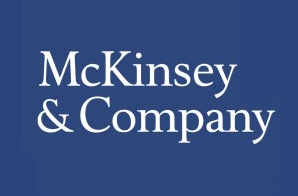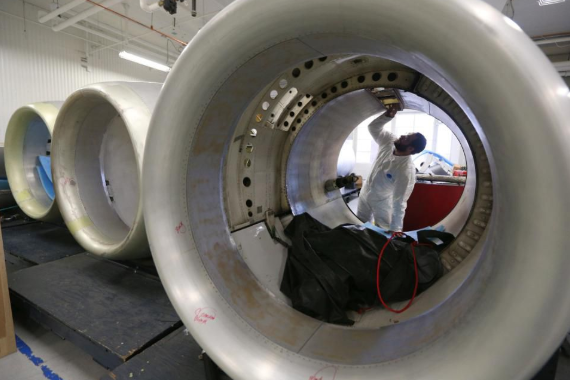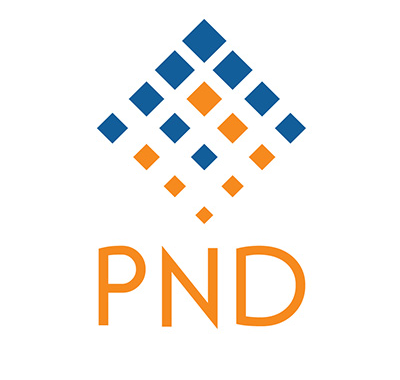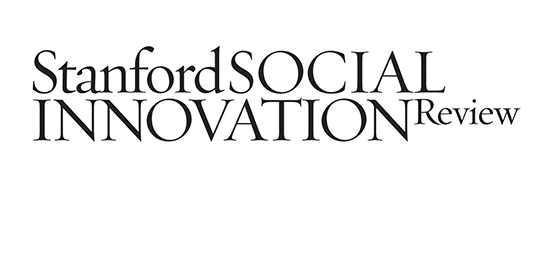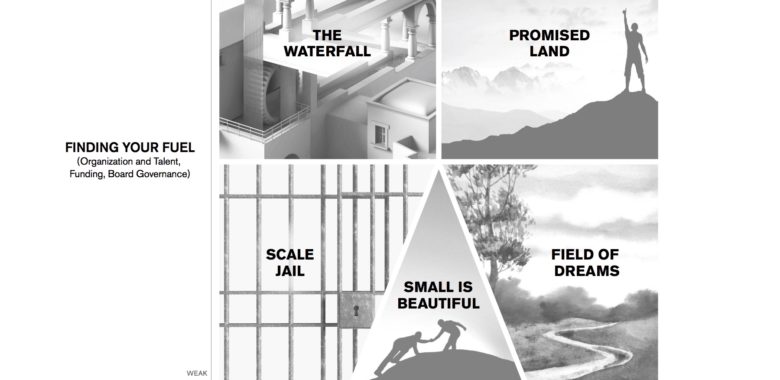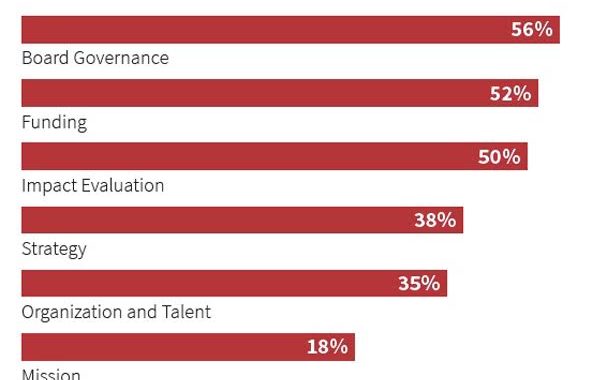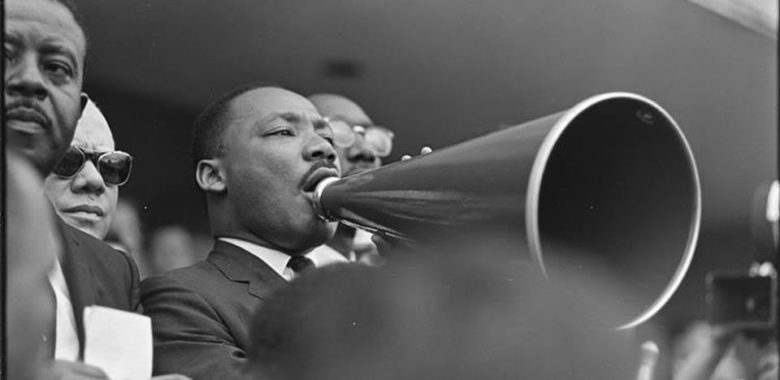Media Coverage / Articles
Media Coverage and Reviews of Engine of Impact
An interview with Knowledge@Wharton
Bill Meehan and Kim Starkey Jonker spoke with host Dan Loney for the Knowledge@Wharton radio show, which streams on SiriusXM Channel 111. During the interview, Meehan and Starkey Jonker discussed the challenges associated with measuring impact, the power of donors to change the social sector, and role played by “insight and courage” in nonprofit leadership, among other topics.
Insights on Impact—a Stanford Business Interview
In an article titled “Four Ways Nonprofits Can Increase Their Impact,” Theodore Kinni offers several nuggets of insight from an interview that he conducted with Bill Meehan and Kim Starkey Jonker. The piece appears in the Autumn 2017 issue of Stanford Business, a magazine for alumni of Stanford Graduate School of Business.
Engine of Impact in McKinsey & Company’s Alumni Report
In an interview posted at the firm’s Alumni Center website, the authors discuss Engine of Impact, their decision to collaborate on a study of nonprofit leadership, the ways in which their careers at McKinsey informed their perspective on the nonprofit sector, and other aspects of their experiences at the firm.
Equipping Leaders To Optimize Their Impact: An Interview By Ashoka
Ashoka, the largest network of social entrepreneurs, interviews Bill Meehan and Kim Starkey Jonker to explore lessons and practical guidance from Engine of Impact, including how philanthropists can develop a framework to assess the impact of their nonprofit partners, and how social sector leaders can develop a set of tools to assess and increase the impact of their work.
Nonprofit Leaders Need To Focus On Impact
In an article for Forbes.com, management and leadership columnist Roger Trapp reviews Engine of Impact. “[The authors] assert that nonprofit executives, through philanthropists, grant makers and board members to ordinary donors and citizens – must decide if they want a robust, high-performing nonprofit sector or they don’t. If they do, they must adopt the kind of transformational leadership that typifies our most ambitious philanthropists and social entrepreneurs.”
A Review by Beth Kanter
In her book review, Beth Kanter draws attention to the special matrix that Bill Meehan and Kim Starkey Jonker present in Chapter 8 of Engine of Impact “I love frameworks, but sometimes they are dry and boring. Not in this book,” Kanter writs. “The authors have created a ‘Readiness to Scale Matrix’ which includes five categories, presented with engaging visual metaphors to make it memorable.”
A Review at PhilanTopic (Foundation Center)
Kyoko Uchida, features editor of Philanthropy News Digest, provides an extensive tour of key points from Engine of Impact on topics such as mission, strategy, and board governance. She homes in on the central role that impact evaluation plays in Meehan and Starkey Jonker’s model of strategic leadership, calling the book, “an energizing, if sobering, read for nonprofit leaders, board members, and funders alike.”
Want To Achieve Impact In The Nonprofit Sector? Here’s Why And How
Brook Manville reviews Engine of Impact, calling it an “-inspiring new book [that offers] a call to action and a prescription for how to make a difference: go serve the non-profit sector—as a leader, board member or philanthropic contributor–and dedicate yourself to achieving change that really matters.”
Engine of Impact named to Matthew Bishop’s “Philanthrocapitalism Books of the Year” list.
Matthew Bishop notes that Engine of Impact provides “a blue-print for thoughtful and effective leadership in the sector” and highlights the value that Bill Meehan and Kim Starkey Jonker deliver in identifying “the key factors that have enabled the greatest non-profits to succeed.”
Recent Publications by Meehan and Starkey Jonker
Excerpt on Strategy in the Stanford Social Innovation Review
Not every nonprofit organization can do everything well. That’s one reason why every nonprofit must work relentlessly to achieve and retain its strategic focus—a commitment to doing what it does best. This article from SSIR takes an excerpt from Engine of Impact and highlights the nonprofits that have mastered the essentials of strategic leadership—organizations like Equal Opportunity Schools (EOS).
Learning to Live in a Team-of-Teams World
Five years ago, Bill Drayton described the emergence of a new organizational model for the social sector. This article for SSIR highlights recent research on the promise of that model.
Most Nonprofits Aren’t Ready for the Coming Impact Era
From The Bridgespan Group, April 2018: A survey of more than 3,000 nonprofit sector stakeholders illuminates shortcomings in performance that limit the impact potential of many organizations.
Earning the Right to Scale
Throughout the nonprofit sector, scaling is viewed as a cardinal imperative. Is your organization truly ready to expand its impact? Here, presented in an article for SSIR, is a tool to help you find out.
The Four Questions to Ask When Serving on a Nonprofit Board
From McKinsey Quarterly, a brief guide to serving as a nonprofit board member.
Filling Essential Gaps in Nonprofit Leadership
The Stanford Survey on Leadership and Management in the Nonprofit Sector shows that most nonprofits fall short in important areas of performance. This article, from SSIR, discusses ways to help solve this problem.
How to Get the $300 Billion More That Nonprofits Need to Make a Difference
A call to action for the Impact Era, published in the Chronicle of Philanthropy.
Forbes.com Column by Meehan and Starkey Jonker
Driving Nonprofit Impact With Dollars, Choices
We argue that the nonprofit sector is poised to become more effective — if donors can optimize their power. By voting with their checkbooks, donors can exert the power to encourage, even demand, that nonprofits address and overcome core leadership and management challenges.
How Well Does Your Nonprofit Board Measure Up?
Behind every effective nonprofit organization is an effective board of directors. Unfortunately, nonprofit boards often fall short — but there are tools that can help board members improve their performance—and the performance of their nonprofit.
A Better Approach To Winning: Lessons From The Positive Coaching Alliance
At any given time about 40 million American kids are participating in an organized sports activity. Jim Thompson, founder of Positive Coaching Alliance, shares insights on the power of positive coaching in youth’s lives and how we can tap into the immense scope of potential impact in this field.
To Lead Well, Think Hard About The Legacy That You’ll Leave
As daunting as it may sound, the time to start pondering your legacy is now. We speak with Sally Osberg (Skoll Foundation), Matt Bannick (Omidyar Network), and Chris Dawes (Lucile Packard Children’s Hospital) and share their insights from their extraordinary careers.
Creating a (New) Space: Insights from a Decade of Leadership at Omidyar Network
Matt Bannick shares his learnings from over a decade of leadership at the Omidyar Network, which was one of the first hybrid philanthropic organizations to successfully combine traditional grantmaking and impact investing.
‘Tough-Minded Optimism’: Savvy Leadership Advice From 17 Years At The Skoll Foundation Helm
Sally Osberg shares her views on strong leadership after serving for 17 years as the president and CEO of the Skoll Foundation.
Turning ‘Doing Well By Doing Good’ Into Real Millennial Social-Sector Leadership
Although millennials are more eager than students of preceding generations to pursue viable careers in social impact, simple urges to do good are not enough to make appreciable dents in the world’s most pressing problems.
Big Topic on Campus: Doing Well by Doing Good
Today, the speakers who draw the biggest and most boisterous crowds—who fill students with a yearning to follow in their footsteps—are often dedicated men and women who run “do-gooding” organizations.
A ‘Mother’s Vision’: Building And Scaling A Premier Children’s Hospital
Esteemed philanthropist Susan Packard Orr and CEO Christopher Dawes of the Lucile Packard Children’s Hospital reflect on their respective approaches to strategic leadership.
Business Strategy for the Social Sector: In Praise of Economist Sharon Oster’s 6 Forces Model
High-performance nonprofit organizations closely resemble high-performance companies—except for crucial ways in which they don’t resemble companies at all.
‘Unparalleled Leadership’: Lessons From the CEO of a Top Children’s Hospital
On the occasion of his retirement from Lucile Packard Children’s Hospital, its longtime CEO reflects on bringing people together, pursuing a vision, and other elements of leading well.
Team of Teams: An Emerging Organizational Model
The social sector is moving toward a model that emphasizes decentralized autonomy, meritocracy, and a sense of partnership—a model in which team members work together in fluid, constantly changing ways.
Our Core Principles: High Impact at Scale, Yes, but Serve Others Always
Here, the fruit of their long and rich experience, are the authors’ foundational principles as active observers, advisors, and leaders in the social sector.
How Two Figures Shaped Our Core Principles on Nonprofit and Philanthropic Leadershi
Encounters with Bill Drayton, founder of Ashoka, and Roy Prosterman, founder of Landesa, had a decisive influence on how the authors think about achieving impact at scale.
Our Call to Action: Join Together for Social Impact
Regardless of their political views, socioeconomic status, ethnicity, or gender, there is much work that all Americans can do to join together in common purpose.
Philanthropists, Nonprofit Executives, and Board Members Must Awaken to the Dawn of the Impact Era
We are entering a new era. Increasingly, philanthropists are grounding their generosity in decisions that focus on having real impact, and nonprofits are refocusing their strategies to maximize that impact.
GuideStar Blog Series "Your Engine of Impact"
Your Engine of Impact: Mission
The first post in an eight-part GuideStar series on key insights from Engine of Impact.
Your Engine of Impact: Strategy
The second post in an eight-part GuideStar series on key insights from Engine of Impact.
Your Engine of Impact: Impact Evaluation
The third post in an eight-part GuideStar series on key insights from Engine of Impact.
Your Engine of Impact: Insight and Courage
The fourth post in an eight-part GuideStar series on key insights from Engine of Impact.
Your Engine of Impact: Organization and Talent
The fifth post in an eight-part GuideStar series on key insights from Engine of Impact.
Your Engine of Impact: Funding
The sixth post in an eight-part GuideStar series on key insights from Engine of Impact.
Your Engine of Impact: Board Governance
The seventh post in an eight-part GuideStar series on key insights from Engine of Impact.
Your Engine of Impact: Scaling
The final post in an eight-part GuideStar series on key insights from Engine of Impact.
Stanford Social Innovation Review (SSIR) Series "Fundamentals, Not Fads"
Fundamentals, Not Fads
The experience of prize-winning social sector leaders highlights the enduring lessons of nonprofit management. Part one of a six-part SSIR series.
Mission Matters Most
To thrive, a nonprofit organization must develop and adhere to a clear statement of its core purpose. Part two of a six-part SSIR series.
Fundraising Is Fundamental (If Not Always Fun)
Overcoming a reluctance to ask people for money is a crucial step that every nonprofit leader must make. Part three of a six-part SSIR series.
A Better Board Will Make You Better
High-performing nonprofits benefit from having a board of directors that functions as more than a rubber stamp. Part four of a six-part SSIR series.
Nothing Succeeds Like Succession
One test of a nonprofit organization hinges on whether it can manage a difficult leadership transition. Part five of a six-part SSIR series.
Clear Measurement Counts
A commitment to impact evaluation is the mark of a nonprofit organization that takes its work seriously. Part six of a six-part SSIR series.
Previous Articles by Meehan and Starkey Jonker
How to Be a Better Nonprofit Board Member
Suggestions for applying the fundamentals of corporate governance to charitable organizations.
The Rise of Social Capital Market Intermediaries
Donors and grantmakers are allocating money more efficiently, thanks to the emergence of information and funding intermediaries.
In the Black with BRAC
A case study of BRAC, widely considered to be the largest NGO in the world.
Curbing Mission Creep
A profile of the Rural Development Institute (now known as Landesa), an organization that remained single-mindedly devoted to its mission.
The Ratings Game
An evaluation of three organizations—the Wise Giving Alliance, Charity Navigator, and Charity Watch—that rate nonprofit organizations.
Investing in Society
Charitable donors should think of themselves as “investors” and should expect returns, just like a stock market investor would.
Subscribe to receive updates on new content


